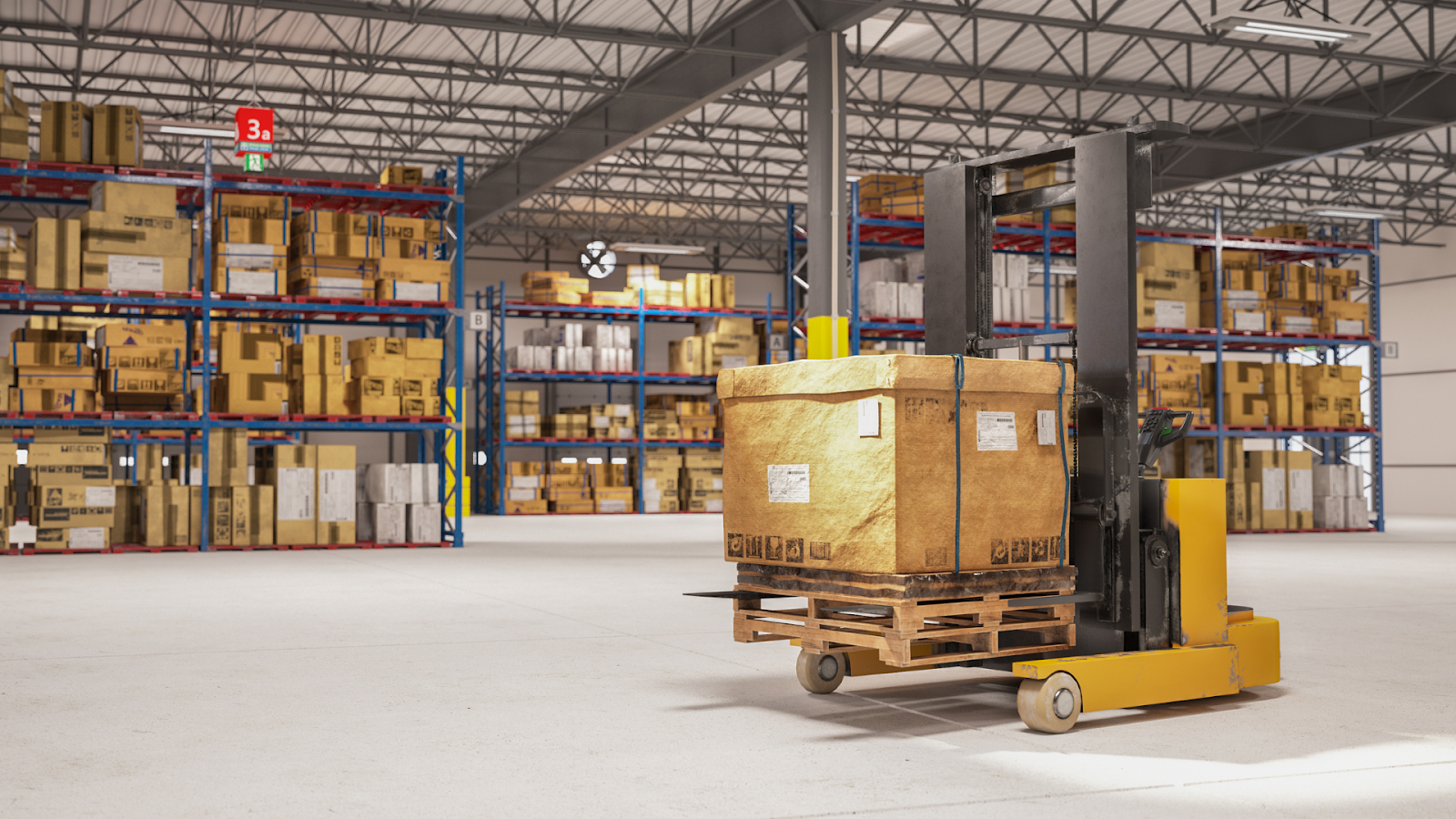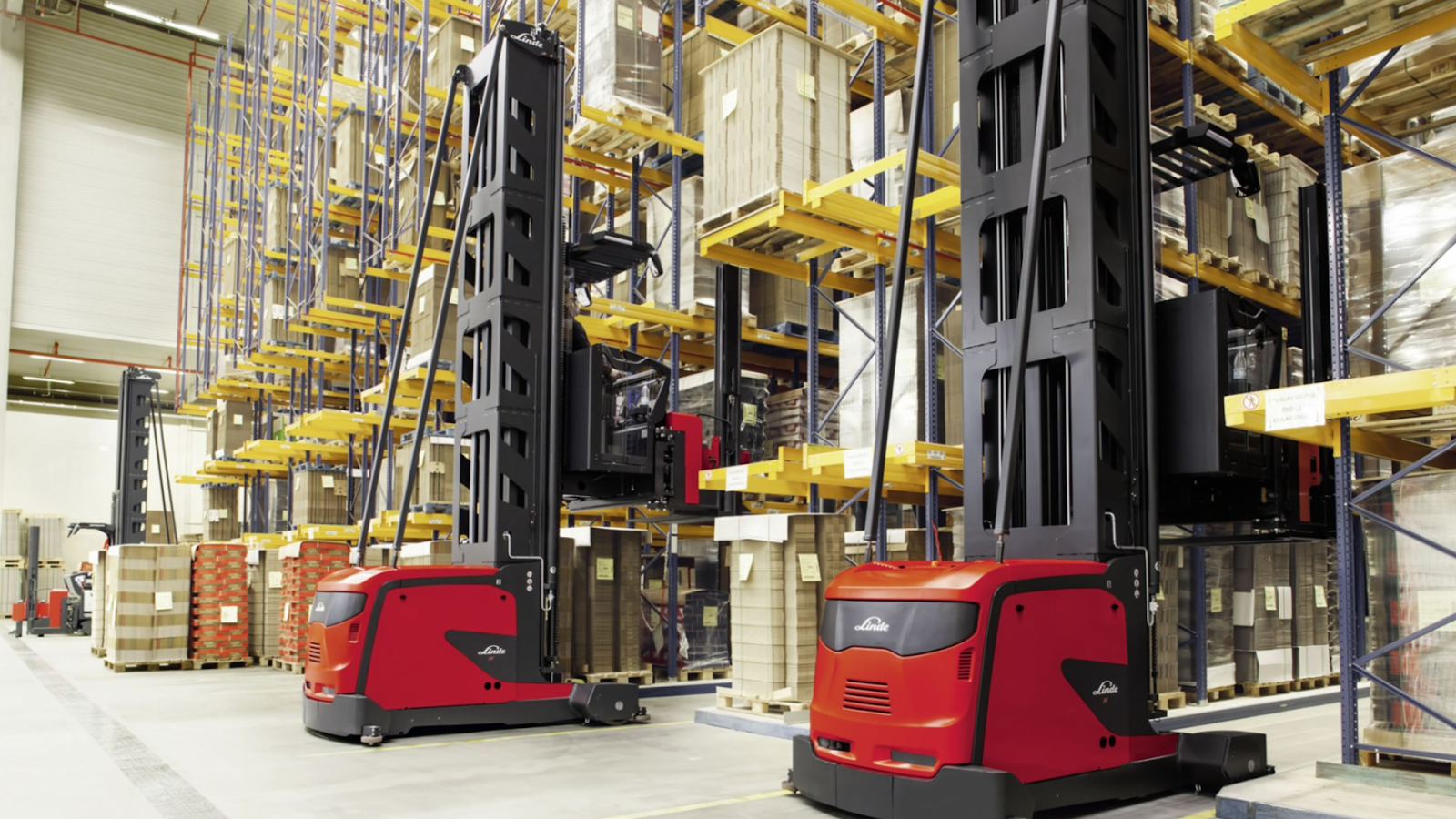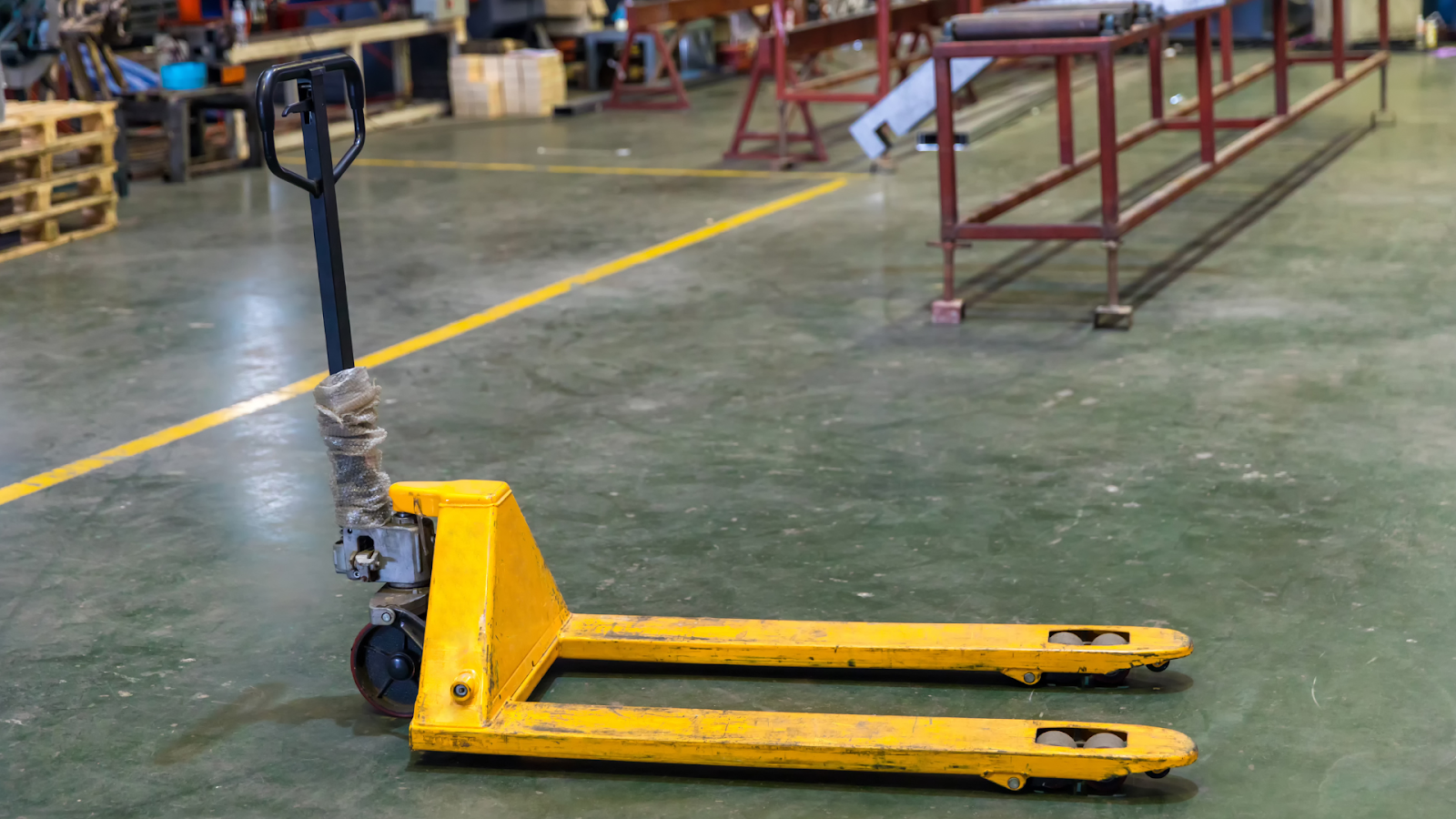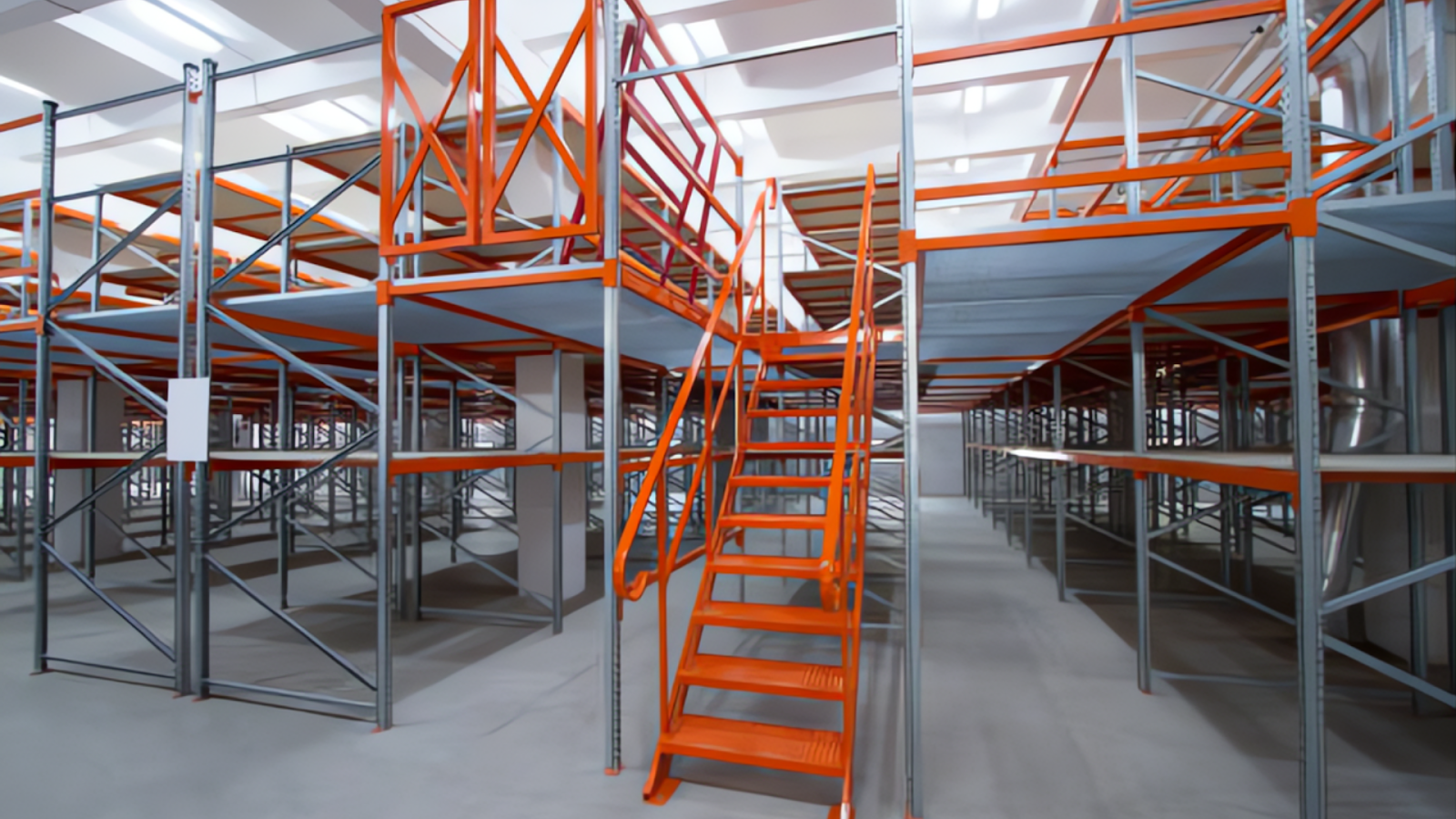In industries like warehousing, logistics, and manufacturing, material handling is key to efficiency and safety. A stacker, designed to lift, stack, and move goods, plays a crucial role in improving these processes. With the market for stackers expected to reach USD 3.72 billion by 2033, driven by the rise of e-commerce, warehouse automation, and a growing demand for electric stackers, businesses are increasingly turning to stackers for enhanced efficiency.
Operations Managers, Facilities Managers, and Business Owners across sectors such as retail and construction benefit from incorporating stackers into their operations, as they help reduce bottlenecks and improve space utilization.
This article explores the importance of stackers, how they work, and how to choose the right one for your business.
A stacker is a material handling device used to lift, stack, and move goods efficiently within a warehouse or industrial environment. Unlike forklifts, stackers are typically smaller, more maneuverable machines designed for stacking and storing goods in vertical spaces. They operate using a hydraulic lifting mechanism, allowing them to raise heavy loads to varying heights. Stackers come in various sizes and designs, making them suitable for a wide range of industries, including warehousing, logistics, and manufacturing.
Improve your material handling efficiency with stacker solutions from Source Equipment. From Husky Rack & Wire’s Pallet Rack Enclosure to Advance Lifts™ heavy-duty Big Friggin BFL Series Lift Tables, we provide the tools you need to stack and store materials securely and efficiently. Our products are built to handle heavy-duty lifting and maximize warehouse space.
Request a consultation today, and let us help you find the perfect stacker solution for your business.
Now that we understand what a stacker is, let’s explore why stackers are so critical to efficient material handling.

Stackers are essential tools in many industries, offering several benefits that enhance both productivity and safety. Their ability to handle materials quickly and efficiently makes them a key component in optimizing warehouse operations. Here are five reasons why stackers are vital for material handling:
Stackers allow for vertical stacking, which maximizes warehouse storage space. By lifting goods to higher shelves, stackers free up ground space for more inventory or work areas, helping to eliminate storage bottlenecks.
Stackers can handle heavy loads and allow operators to perform tasks faster than manual lifting. This helps warehouses speed up operations, reducing time spent on moving materials and improving overall workflow.
Stackers significantly reduce the risk of injury by eliminating the need for manual lifting and transporting. Operators can lift and transport goods safely, reducing the likelihood of accidents, especially in industries like manufacturing and logistics.
Stackers come in various configurations, including manual, semi-electric, and fully electric models. This versatility makes them adaptable to different types of warehouses, from small retail spaces to large-scale manufacturing facilities.
Compared to larger equipment like forklifts, stackers are often more affordable while still offering essential functionality. For Business Owners and Procurement Managers, stackers provide a low-cost solution for enhancing material handling operations.
With their importance established, let’s look into how a stacker machine actually works and what makes it function efficiently.
A stacker operates by lifting materials from the ground or a lower level and moving them to higher positions. Knowing how it works is key to optimizing its use. Here's how a stacker machine typically operates:
Place the stacker under the material to be lifted. Ensure that the machine is properly aligned with the load. Make sure the load is evenly distributed for stability.
Activate the lifting mechanism, which uses either a hydraulic pump or an electric motor to raise the forks or platform. The load is lifted to the desired height, often to shelving or racking systems.
Once the load is lifted, move the stacker to the desired location. The stacker’s wheels or base allow it to glide easily across the floor, providing smooth transportation of materials.
Once at the destination, lower the load into place, ensuring it’s securely stacked. This process is particularly important for maintaining space utilization in warehouses.
Always ensure that the load is stable before moving away from the stacker. Additionally, operators should always be aware of their surroundings and use safety protocols to prevent accidents.
Understanding how a stacker works helps to choose the best type for your needs, so let’s look at the different types of stackers and their applications.

Stackers come in various types, each designed for specific tasks within material handling. Knowing the different types of stackers and their applications can help you select the right one for your needs.
Manual stackers are operated by hand and are ideal for light-duty lifting and small-scale operations. These stackers are compact, versatile, and cost-effective, making them ideal for businesses with limited space and lower lifting requirements.
Applications:
Technical Specifications:
Semi-electric stackers use an electric motor for lifting, while the operator still steers and moves the machine manually. These stackers are ideal for moderate-duty lifting and are widely used in environments that need a balance between manual and electric lifting.
Applications:
Technical Specifications:
Fully electric stackers are powered by rechargeable batteries and are ideal for heavy-duty lifting tasks. These stackers offer maximum lifting efficiency and are often used in large warehouses or environments where frequent lifting and transport are required.
Applications:
Technical Specifications:
All-terrain stackers are designed to operate on rugged surfaces, making them ideal for outdoor use or environments with uneven floors. These stackers are equipped with large wheels and robust construction to handle difficult conditions.
Applications:
Technical Specifications:
Source Equipment offers stackers and accessories that will take your warehouse operations to the next level. Pair our Presto Lifts™ Hydraulic Lift Tables with Bayhead Products' Stacking Pallet Containers to streamline your material handling process and enhance storage capabilities. These durable solutions are designed to improve space utilization and reduce downtime.
Explore our product catalog today and optimize your warehouse for maximum productivity.
While these stackers serve different purposes, it’s important to differentiate between stacker machines and pallet stackers, so let’s compare the two.
It’s important to understand the differences between a stacker machine and a pallet stacker to ensure you select the right equipment. The following table highlights the key differences:
For Facilities Managers and Operations Managers, understanding these differences helps optimize equipment use, improve space efficiency, and ensure operational safety.
Now that we’ve established the differences, let’s explore the key features to look for when selecting a stacker machine for your business.

When selecting a stacker for your business, it's essential to consider features that ensure the machine’s efficiency, safety, and long-term performance. The following technical specifications will help you make an informed decision, tailored to the unique needs of your warehouse, logistics, or manufacturing operations.
The load capacity determines the maximum weight a stacker can handle. Stackers typically range from 1,000 lbs to 5,500 lbs, depending on the model. For heavy-duty tasks, such as moving machinery or industrial materials in manufacturing or logistics, select a stacker with a higher load capacity to avoid overloading and ensure safety.
Manual stackers usually have a smaller turning radius, making them ideal for confined spaces. In contrast, electric stackers offer smoother handling but may require more space. Additionally, look for heavy-duty wheels for easy movement on rough surfaces or uneven terrain, especially in outdoor or large warehouse areas.
The lifting height is vital for stacking materials on high-density racking systems. Stackers generally lift between 40 inches to 180 inches, depending on the design. For warehouses storing items on high shelves or racks, ensure the stacker can reach the required height. Some models can lift as high as 12-15 feet without compromising safety or stability.
For long-lasting performance, prioritize stackers made with heavy-duty steel construction, reinforced lifting arms, and rust-resistant coatings. Electric stackers should also have robust motors and sealed hydraulic systems to minimize downtime and maintenance costs, ensuring the stacker remains reliable in harsh environments.
The ease of operation can drastically improve productivity. Manual stackers require physical effort to pump the lifting mechanism, while semi-electric and fully electric stackers make lifting easier with electric motors. For high-volume operations, electric models reduce operator fatigue and increase throughput, ensuring efficiency in demanding environments.
With these features in mind, let’s discuss how to choose the right stacker based on your specific requirements.

Choosing the right stacker for your warehouse or facility requires a comprehensive evaluation of your material handling needs. Below are key technical factors to consider, ensuring that the stacker you choose will meet your operational demands, improve efficiency, and increase ROI.
Determine the typical weight your stacker will handle. For heavy-duty tasks, choose a stacker with a capacity of 3,000 lbs to 5,500 lbs. Lighter loads may be handled with manual or semi-electric stackers, offering a more cost-effective solution.
Measure your available space and opt for a stacker that fits your layout. Compact manual stackers or narrow-aisle electric stackers work well in tight spaces, and 4-Way Pallet Trucks are ideal for constrained areas where efficient space utilization is critical.
For continuous operations, a fully electric stacker is best as it provides consistent power and reduces operator effort. Manual or semi-electric stackers are better suited for less frequent, lighter lifting tasks in smaller environments.
Ergonomically designed stackers with adjustable handles and padded platforms reduce operator fatigue. Ensuring comfort boosts productivity and safety compliance, which is crucial for Safety Officers and Operations Managers.
Manual stackers are affordable, but consider semi-electric or fully electric stackers for more frequent, heavy lifting. They offer long-term cost savings by improving productivity and reducing labor costs.
Once you’ve selected the perfect stacker, let’s explore how Source Equipment can help streamline your material handling with tailored solutions.
When it comes to improving the efficiency and safety of your material handling operations, stackers are essential. At Source Equipment, we offer reliable stacker machines that help you maximize warehouse space, increase lifting efficiency, and ensure safety compliance. With decades of experience in warehouse and distribution management, we partner with top manufacturers to provide durable, high-quality stackers tailored to your business needs.
Explore our range of stackers and related products designed to enhance your operations:
Husky Rack & Wire offers robust storage solutions that complement your stacker operations by ensuring safe and efficient material handling in your warehouse.
For businesses looking for lift tables and accessories that improve the efficiency of stackers, Advance Lifts™ provides top-of-the-line options that increase productivity.
Presto Lifts offers a range of lift tables that work seamlessly with stackers, improving ergonomics, reducing manual labor, and increasing overall safety.
Bayhead Products provides a variety of storage solutions that complement the use of stackers in improving warehouse organization and capacity.
Maximize your warehouse’s lifting potential with Source Equipment’s range of stackers and related equipment. These solutions are perfect for businesses that require high-efficiency stacking and lifting systems.
Choosing the right stacker, whether manual, semi-electric, or electric, boosts efficiency, safety, and space utilization. Regular maintenance and proper selection enhance ROI and productivity. For Business Owners, Facilities Managers, and Operations Managers, investing in the right stacker reduces downtime and ensures long-term success.
When your warehouse demands efficient and safe material handling, Source Equipment’s stacker solutions are your go-to. With products like Bayhead Products’ Poly Trucks for easy transportation and Presto Lifts’ Magnum Super Heavy Duty Scissor Lifts for lifting heavy materials, you can achieve enhanced productivity and safety. Let Source Equipment provide the solutions you need to streamline your operations.
Request a consultation and find the ideal stacker for your business today.
Stackers are commonly used in industries like warehousing, manufacturing, logistics, construction, and retail. These machines are essential for efficient lifting, stacking, and storing materials in tight spaces. Businesses with high-volume material handling operations rely on stackers to move goods, improve space utilization, and increase productivity while reducing safety risks. Stackers are particularly useful in environments with heavy-duty lifting needs and limited floor space.
Yes, some types of stackers, particularly all-terrain stackers, are designed for outdoor use. These stackers come equipped with larger wheels and reinforced components to handle rough, uneven surfaces typically found in construction sites or outdoor storage areas. If you need a stacker for outdoor environments, make sure to choose one built for rugged conditions, as it will improve maneuverability and durability, ensuring a longer service life.
To maintain a stacker machine, regularly check the hydraulic fluid levels and ensure there are no leaks in the hydraulic system. Keep the machine clean and lubricate moving parts to avoid wear and tear. Also, inspect the tires or wheels for damage and ensure that the stacker operates smoothly without unusual noises. For Operations Managers and Facilities Managers, routine maintenance ensures the longevity of the stacker and helps prevent costly repairs or downtime.
A manual stacker requires the operator to pump a handle to lift the load, while an electric stacker uses an electric motor for lifting, making it easier to lift heavy materials with less physical effort. Manual stackers are typically more affordable and ideal for smaller operations, while electric stackers are better for high-volume lifting tasks, offering greater efficiency and reduced operator fatigue. For Safety Officers, electric stackers reduce the physical strain on workers, improving safety compliance.
Yes, stackers are designed to both lift and stack materials. They are equipped with adjustable forks or platforms that allow operators to lift materials to the required height and then safely stack them. Depending on the type, stackers can handle a range of materials, from lighter items in retail to heavy-duty loads in manufacturing. For Business Owners, stackers are versatile, cost-effective solutions that improve space utilization while streamlining material handling operations.




Ready to Upgrade Your Process Operations?